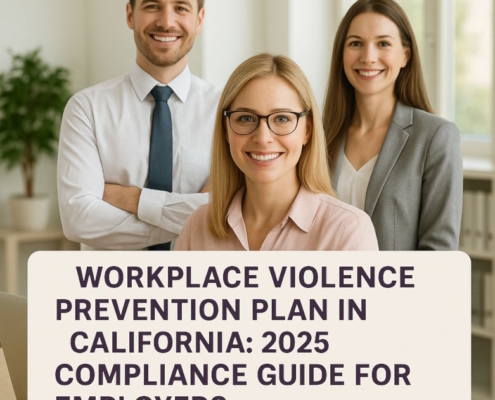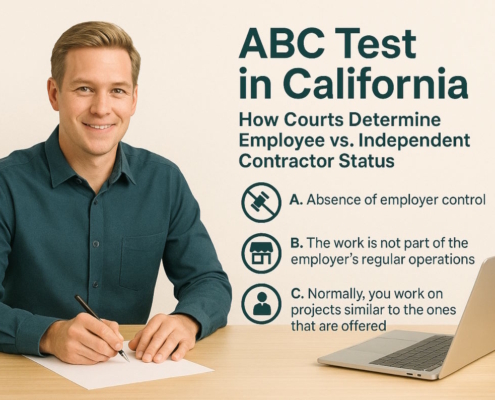How to interview candidates for a job
During the candidate interview process, an interview guide can be a very helpful resource. We’ll guide you through the interview guide in this article. We’ll discuss the advantages of using one, as well as the seven essential components of an interview guide.
A document known as an interview guide helps companies organize the way they interview candidates. It makes interviewers more aware of what questions to ask and when, and it guarantees that every applicant will have the same experience.
The interview guide’s content will vary based on your particular organizational requirements, the interview style you choose, and the function you are hiring for, among other factors.
Why using an interview guide is beneficial
There are various advantages to using an interview guide during the employment process.
An organized process: Structure is created when all interviewers go through the same stages in the same order. Consequently, there is a decreased likelihood of individuals overlooking to ask specific questions of applicants or provide them with specific information.
Experience of the candidate: All candidates will have the same experience if they follow an interview guide. There will always be differences because no two interviewers are the same, but at least the questions and procedure are the same for everybody.
Equal evaluation: You can evaluate candidates using the same scoring system if you employ the same interviewing technique and ask each one of the candidates the same questions. In the interview process, this lowers the possibility of bias.
Example interview guide: seven essential components
Your interview guide should ideally be a component of a carefully thought-out hiring procedure. It is therefore consistent with each step of that procedure.
This means that the interview guide should, for example, include the requirements for a new position as stated in the job description (i.e., the necessary abilities, personality, and skills of a potential candidate) to be considered during the interview. Let’s examine the seven essential components of an interview guide.
- Briefing and Invitation
Ensure that each candidate who advances to the interview stage receives an identical invitation that includes an explanation of what to expect during the interview (e.g., how many people they will speak with, how long it will likely take, if they need to prepare anything beforehand, what paperwork they must bring, etc.).
This is an illustration of how the email inviting someone to an interview can seem:
Subject Line: Sunshine Corp.: Interview Availability
Hi Steve,
Thank you for applying to the Sales Representative role at Sunshine Corp. We’ve carefully reviewed your application, and we’re pleased to invite you to interview for the position!
Your interview will be conducted via Zoom and last roughly one hour. You’ll be speaking with Samantha, our HR Manager, and Kyle, our Sales Team Leader here at Sunshine Corp.
Please let us know when you are available during the following times:
[Day, date – time, timezone]
[Day, date – time, timezone]
[Day, date – time, timezone]
Don’t forget to bring your [paperwork] and the [sample test] you prepared.
Thanks again for your interest in joining the Sunshine Corp team! We’re looking forward to speaking with you.
Best,
Melissa Robles
mrobles@sunshinecorp.com
The specifics and tenor of your interview invitation may vary, of course, but the sections in between brackets should always be mentioned. You can link to your company’s interview invitation template—ideally kept in Google Drive or a comparable platform—in your interview guide to ensure that every candidate receives a comprehensive invitation.
- Laying the groundwork
This is a real-world problem. Where would you like to conduct interviews? Who will conduct the candidate interviews? Where’s the best spot to call if it’s a video interview? To ensure that every applicant has the same experience, it is also a good idea to have the same settings for each one of them. Your interview guide should provide the “setting” requirements for both online and offline interactions.
If the interview guide, a copy of the candidate’s résumé, a copy of a work sample the candidate had to create, or any other type of document, is required of the interviewers, it should be included in the guide as well.
- Salutations
When welcome applicants, there are undoubtedly some things you should make sure to say. They could be about anything—the business, the past of the organization, the workplace, the job, etc. Provide the interview guide with the interview opening and all the necessary topics to cover.
- Questions
Standardized interview questions are employed in organized interviews. This gives the interviewer a standardized way to record data and rate the candidate’s qualifications consistently. Additionally, it gives the interviewer the ability to fairly evaluate candidates and make the best choice possible based on information.
In addition to using standardized questions, the STAR method is a frequently employed technique in interviews. This approach provides an organized means of obtaining data from the applicant. STAR represents:
Situation: Inquire about the candidate’s circumstances.
Task: What objective did the applicant seek to achieve?
Action: Inquire about the steps the candidate took to finish the work and make the most out of the circumstances.
Result: Ask the candidate about what the result they achieved and what they took away from the exercise.
It is strongly advised to use the STAR technique to assess critical competences required for the position. By posing the identical question to every applicant, you can quickly assess how much experience everyone has in these crucial areas.
This is also when it becomes crucial to coordinate the many aspects of your hiring process. The interview guide’s questions ought to include the essential abilities and capabilities outlined in the job description.
- Questions for candidates
There should be a section on applicant questions in your interview handbook. Towards the conclusion of the interview, the interviewer typically asks the candidate if they have any questions on the position, the business, the team, etc. People’s questions, if they ask any at all, can reveal a lot about their interest in a position with your company.
- Conclusion
A few things to consider before bidding a candidate farewell. Thank them for their time first of all. Second, let them know what has to happen next. When will they find out if they advanced to the next round of the selection process, what that round is, and how will they get in contact with you (by phone, email, etc.)? Thirdly, find out who their references are and how to get in touch with them, if you haven’t already done so earlier in the process. You can use this to aid in your reference check. Fourth, inform them of who to contact and how to get in touch with you if they have any concerns after they depart.
Make sure your interview guide has all of these information.
- Scores
It’s time to rate the candidate after the real interview has ended and they have left. What was their overall performance on each question? While the interview and the applicant’s responses are still fresh in their minds, the interviewer should immediately fill in these ratings (if they haven’t already).
There are other categories into which the interview questions can be separated, including person-job and person-organization fit. In the former, questions are meant to ascertain a candidate’s suitability for the job’s needs. In the latter, questions are meant to ascertain a candidate’s suitability for the organization (and its culture).
The type of role you’re hiring for will determine the questions you ask about person-job fit, but not as much about person-organization fit. As a result, you may choose to just incorporate those in your interview guide. If not, you can want to include a link to a Google Drive account (or a comparable service) where you save these kinds of interview questions.
To sum up
One of the best ways to make sure interviewers handle all applicants equally is to use an interview guide. It facilitates the process of evaluating and scoring candidates and is a useful tool for establishing structure during candidate interviews. The specifics of the interview guide will vary depending on the organization and the function, but the seven components this article lists provide a good starting point.
Familiarizing yourself with various types of interviews can significantly improve your approach to interviewing candidates.































